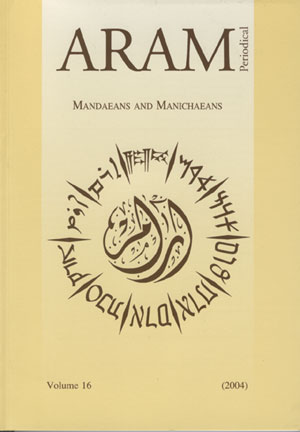 previous article in this issue previous article in this issue | next article in this issue  |

|
Document Details : Title: Golden Years Subtitle: The Iranian Roots of Orphic Dodecaeteris Author(s): ALBRILE, Ezio Journal: ARAM Periodical Volume: 24 Date: 2012 Pages: 493-499 DOI: 10.2143/ARAM.24.0.3009286 Abstract : The Orphic Dodecaeteris represents a link between the Greek world and religion. One of the surviving fragments transmits an Apocalyptic vision that we find in a series of prophetic documents of the Late Hellenistic period. The likely source of these prophecies is a passage of Zā:dspram, a Pahlavi anthology which transcribes archaic mythological material. In them, the creator Ohrmazd appears in the night sky riding a fiery horse, an image that we find also in the Book of Revelation. This peculiar doctrine should be attributed to an Iranian astrological tradition ultimately depending on an old astrological doctrine of Greco-Babylonian origin. We find a direct reference to this unorthodox teaching, (from the point of view of Zoroastrian faith), in the subdivision of the stars into Ahurian and Ahrimanian. The origin and development of the idea of a Zodiacal circle have been much debated, but now there is a general consensus that a kind of Zodiacal belt must have been defined by Babylonian astronomers as early as 700 BCE. Thus, the history of the Iranian Astrological lore begins with the basic Mazdaean scheme of the great cosmic (and mythological) period of 12,000 years, with the simple scheme of the 12 Zodiacal constellations, which were originally linked with the 12 months of the year. The Astrological power (chronochratoria) exerted by the 12 signs over the 12 millennia of the cosmic year was probably introduced later, with the basic corpus of the Hellenistic Astrology. |
